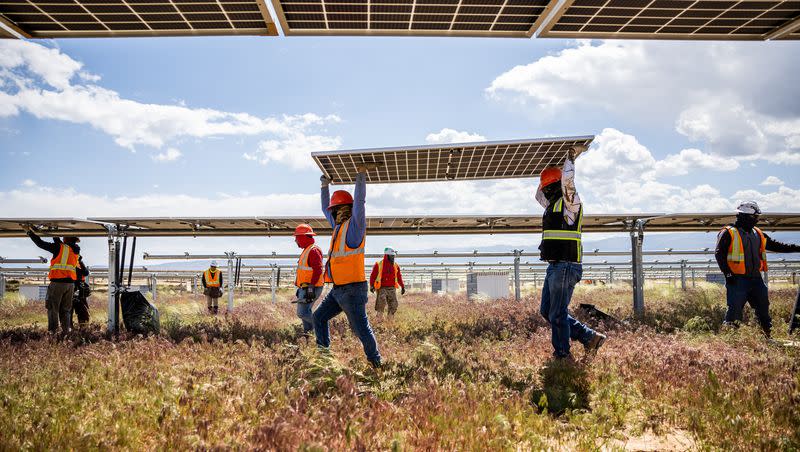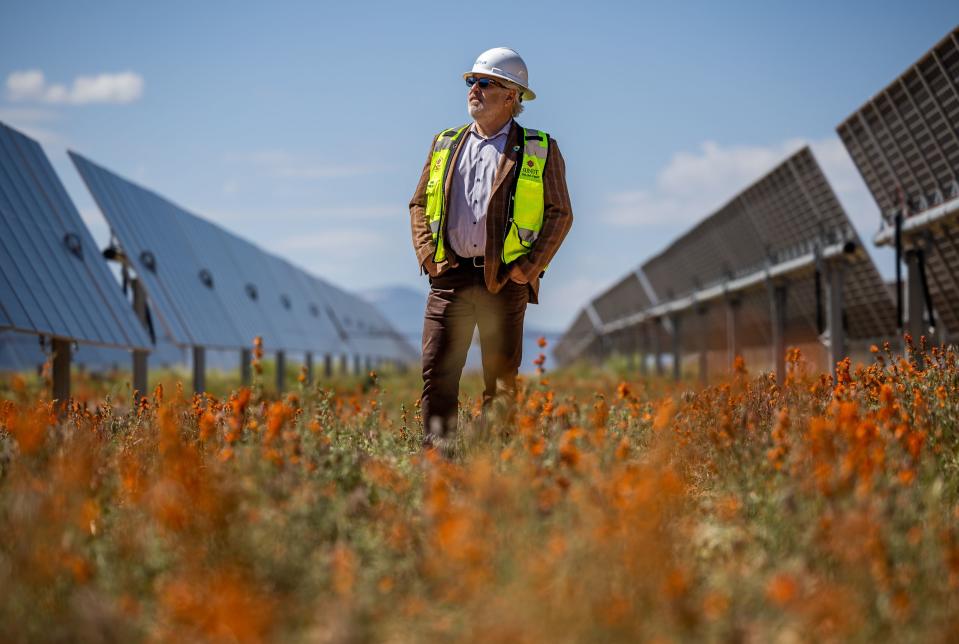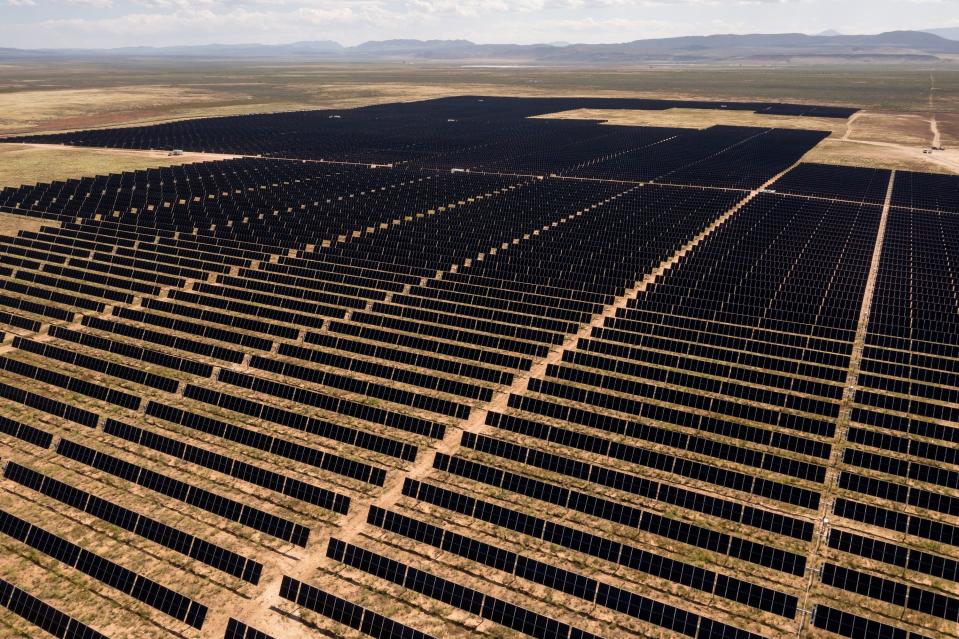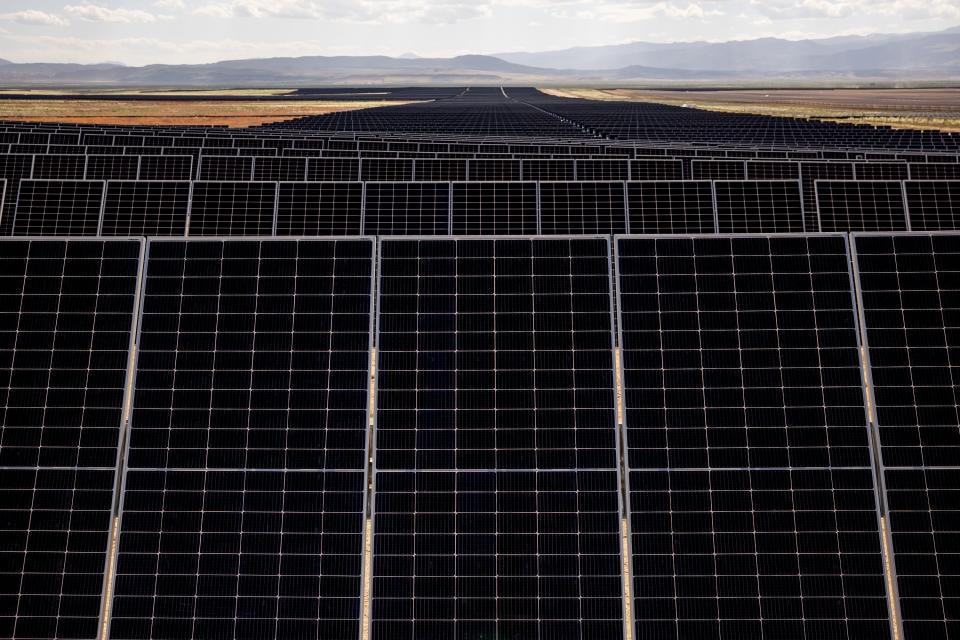Building renewable energy projects a better way with community buy-in

A man who grew up on a certified organic farm in California and was head of the North American division of a Norwegian renewable energy company called Scatec is growing solar fields in Utah, and in some unlikely places.
Luigi Resta, president of rPlus Energies headquartered in Utah, is described as a leading pioneer in his field when it comes to deployment of renewable energies in states like Utah and 16 others around the country that are either in place, or in pursuit.
“When you go into these communities, you become part of the community and you are doing work that is going to last for 20 to 30 to 40 years. And it is important to understand that honesty, integrity and transparency is really critical,” he said. “I mentioned early on that I grew up on a farm and you know, farmers are really the true, sustainable cultivators, and they are multigenerational, and they look out for the land.”
Resta’s approach to development is that to have repeat business in communities, there are key elements that have to be in play.
“You have to be honest and have integrity and transparency both on the positive side and the difficult and challenging side.”
Pioneering spirt
“The Utah Red Hills project was the first project that we had in Iron County over utility-scale solar development. And Luigi obviously has been one of the pioneers in developing utility-scale solar in Utah. He was instrumental in helping develop some of the laws and amendments to the laws in Utah to help with economic incentives and opportunities and the ability to do large scale solar in Utah,” said Reed Erickson, Iron County planner.
Related
How much money does renewable energy make for rural Utah’s economy? It’s more than you’d think
What’s the future of energy in the West? More renewable energy, less coal, new nuclear projects

It’s all about location
Resta said the project of Utah Red Hills at 104 megawatts ended up being the largest in the country, for about 10 seconds, until another larger solar producer came online.
“We built it in 2015,” he said. “Everybody was very ecstatic at the outcome and commitment, and as a result they invited us back, and we are building a second project in Iron County.”
Utah Red Hills, in fact, was the first utility-scale solar project in Utah and paved the way for nearly 1 gigawatt of installed solar since then in the state.
Resta said it is all about building relationships, including with county commissioners, residents, and even schools.
“It is an example of taking a thoughtful development that can really allow for continuous development,” he said.
Erickson said Utah Red Hills was a breakthrough.
“I think that (Resta) is one of the early pioneers to lead the way and has done a great job at setting an example for other developers to come and make similar projects,” he said.
Iron County now has more than a dozen solar projects in development at 1,000 megawatts.
“We’ve had a couple of bigger (projects) since then, but we’ve got solar development now all over Iron County, and a lot of that is a result of being able to follow the pattern that he and his team set out with the first project that was done. You have to develop the confidence in it and a reassurance in the community with elected officials that allowed us to continue all of the other projects to follow after that,” Erickson said.
Related
Planned solar farm in Tooele County will deliver big on renewable energy
Got renewable energy? Massive lands bill means more potential projects for Utah school trust lands
Resta said location, location and location is the key.
“Thoughtful consideration of location is really important, especially with wind and solar,” Resta said. “Generally, if you have the option to move a project from one location that might be sensitive for visual impacts or cultural or environmental impacts to an area of lower impact, you should always choose the lower impact.”
Resta’s company is now working on the 240-megawatt Appaloosa solar project in Iron County which is under construction and tied to a new scholarship fund of $120,000 that rPlus and its partners established for Southern Utah University students.

Overcoming energy traditions in coal country
In 2021, rPlus energies completed the Graphite Solar project in Carbon County with a capacity of 105 megawatts of energy and hopes to break ground this year on the 400-megawatt Green River Energy Center in Emery County, which will include battery storage.
“These are conservative, coal based communities, and when we started developing these projects, they were apprehensive at best and probably more in opposition because they viewed it, and to some degree rightfully so, as a direct assault on their kind of culture and economy.”
Graphite Solar turned out to be a success, employing 100 workers during the construction phase at a time Resta said was the first year in 147 years they were not pulling any coal out of the ground.
“We persistently sat down with them, talked to them, and we were working with the community,” he said. “They were able to understand this is a continuation of that identity as an energy community.”
Resta said Graphite Solar is generating good tax revenue for the county in rural areas of the state that often struggle.
“And the county is asking us to bring in additional projects, so that was a great example of difficult times, but how to remain part of that energy community and create jobs and economic diversity.”
The U.S. Energy Information Administration projects that more than half of the new electrical generating capacity that will come online this year will be from solar.
Developers, it said, plan to add 54.5 gigawatts of new utility-scale solar capacity for the power generation sector. Another 17% will come from battery storage, which is part of Resta’s Green River project and part of retrofit plans in Iron County.
Resta is also a key developer in the pumped storage hydropower generation field and has his eye on a project planned for Tooele County, part of his overall 40-project portfolio.
His company has 11 pumped storage projects in development, and of them, two have had their final license submitted to federal regulators for review.
“Only five projects in the last 30 years have made it to this point,” he said.


